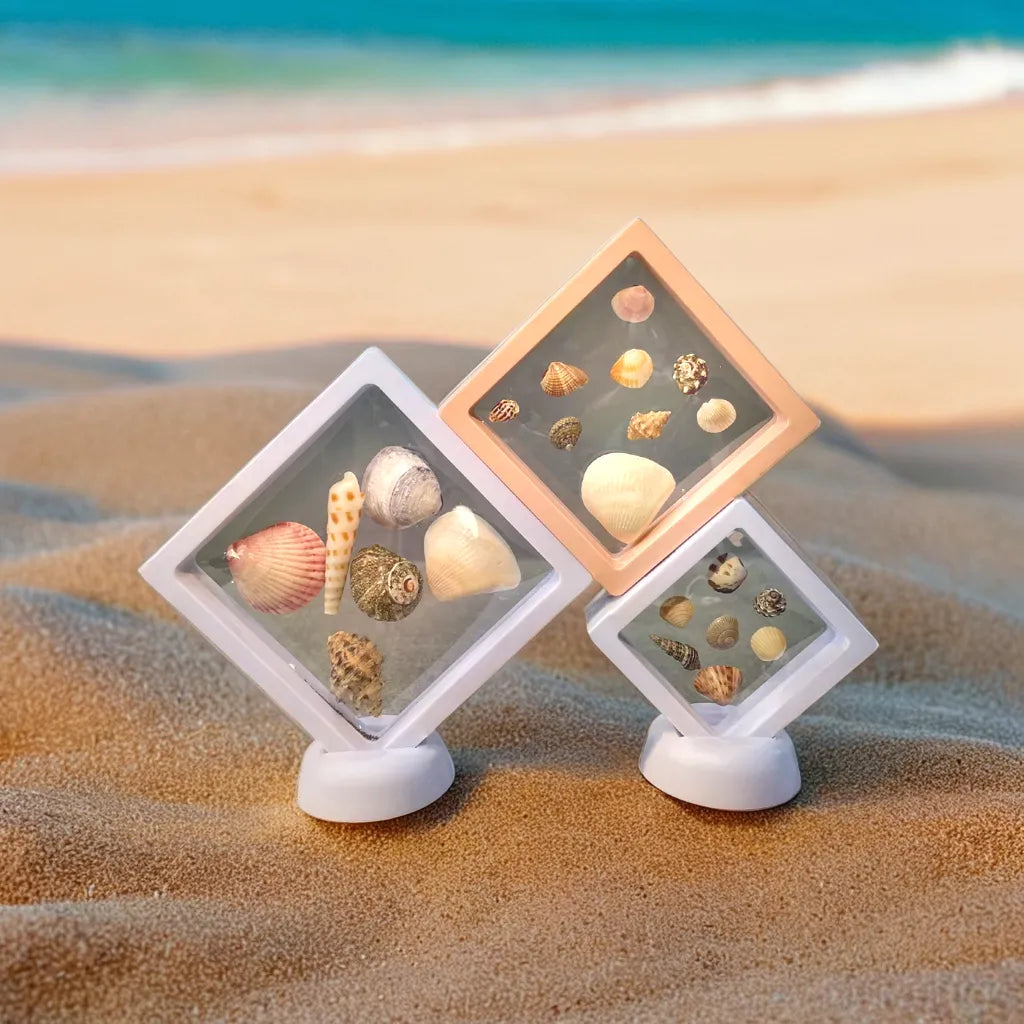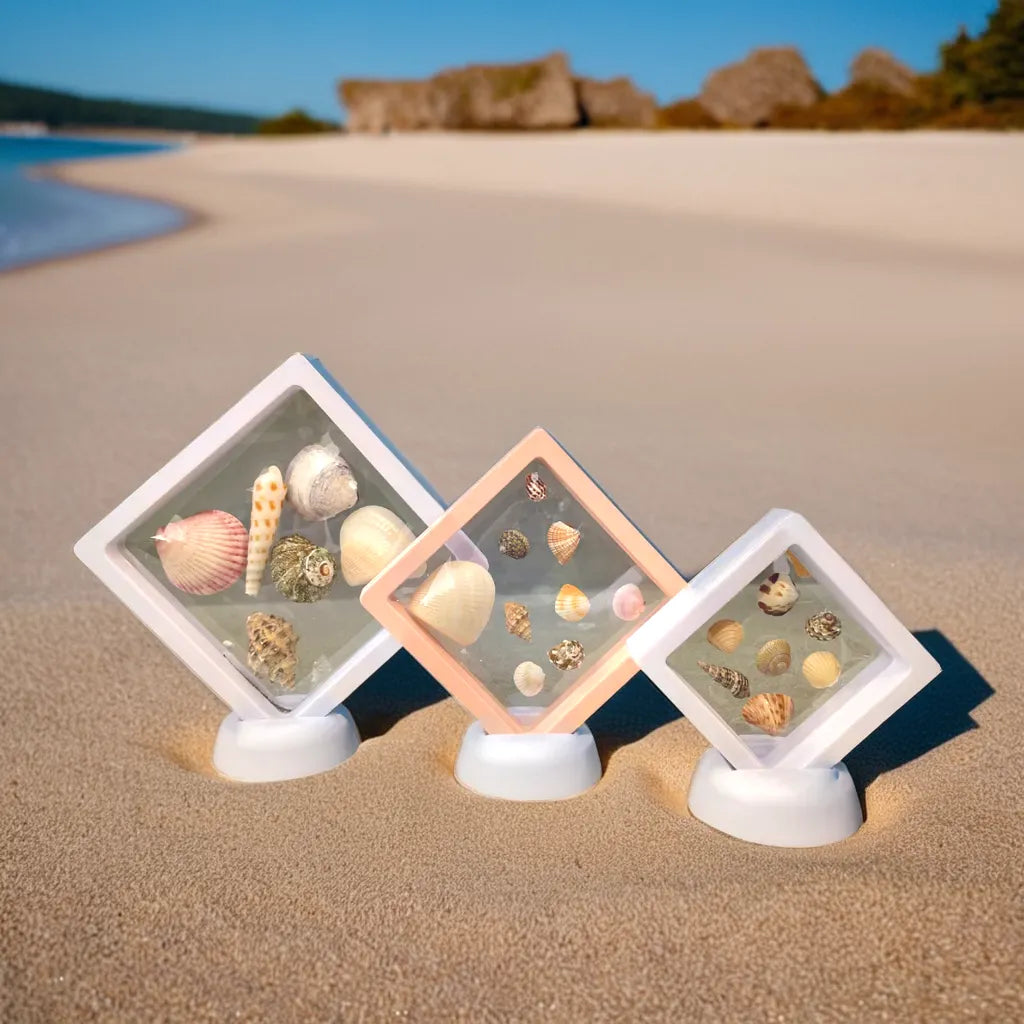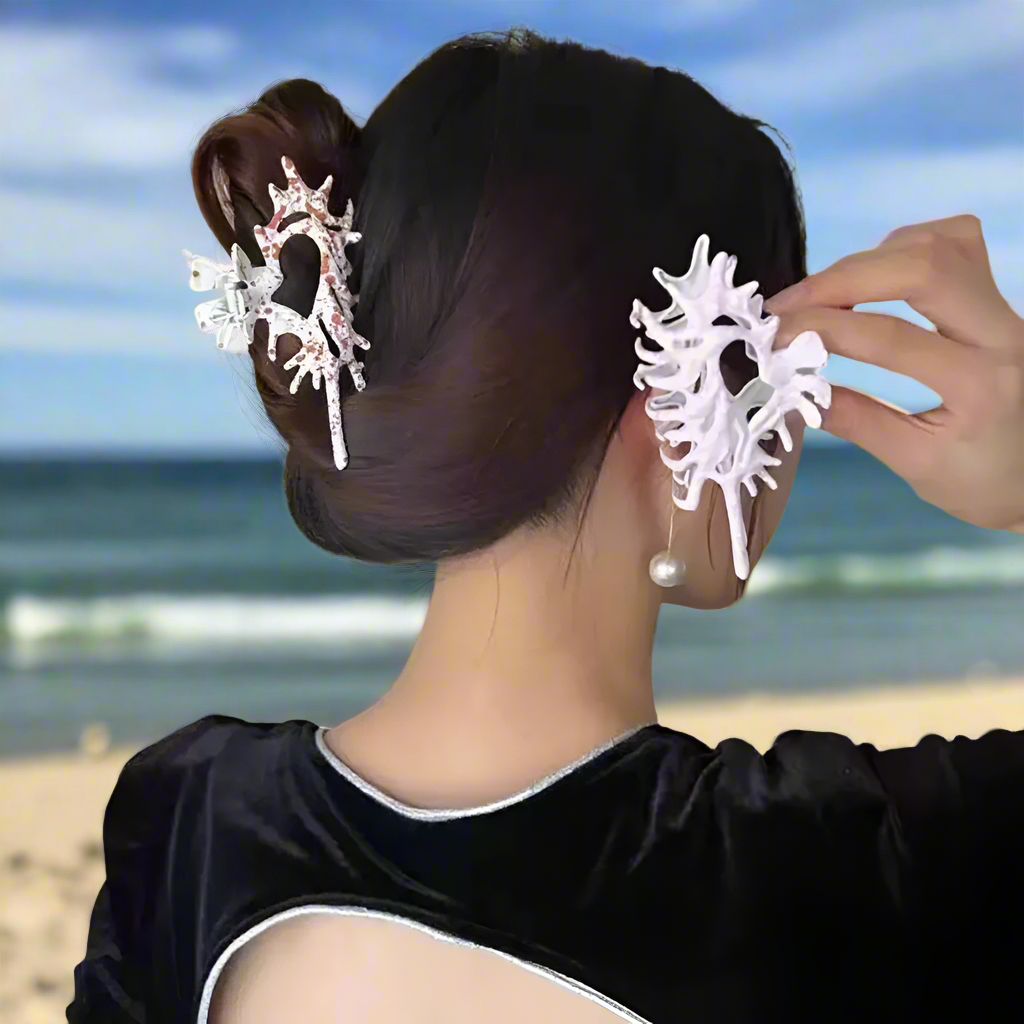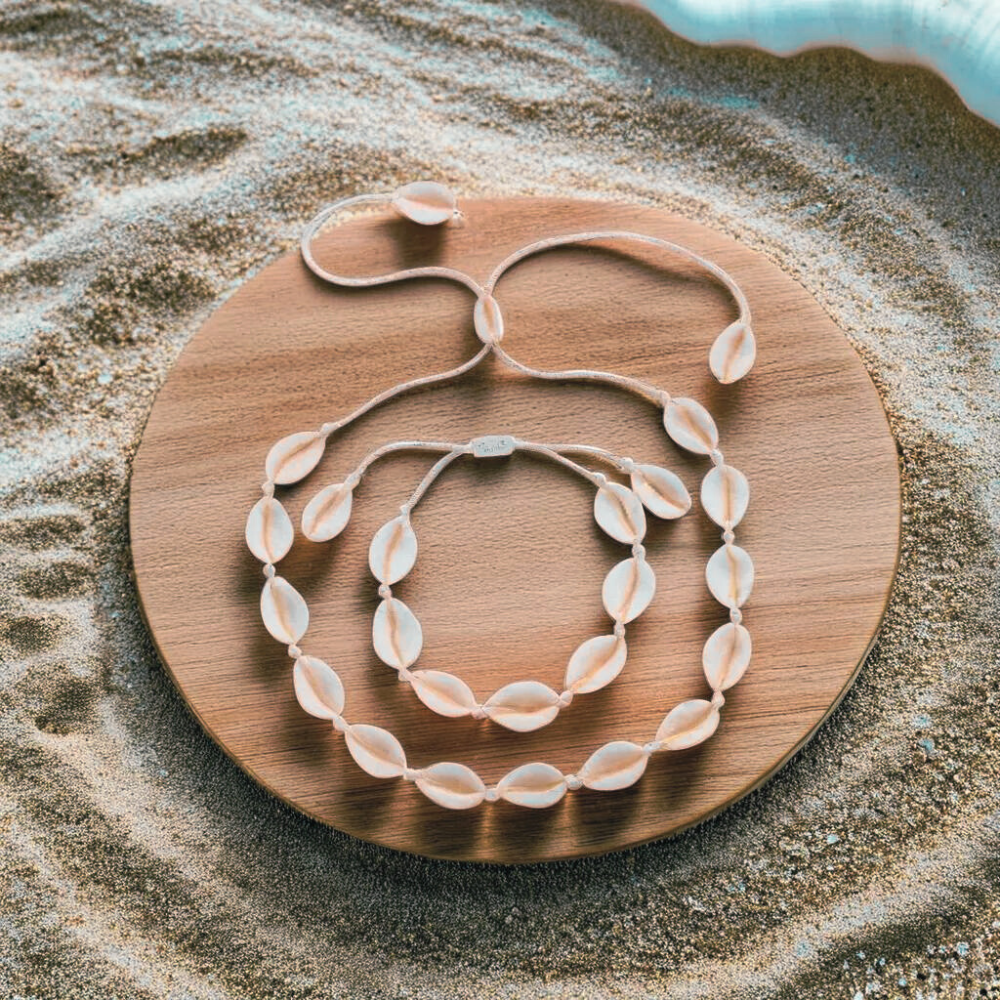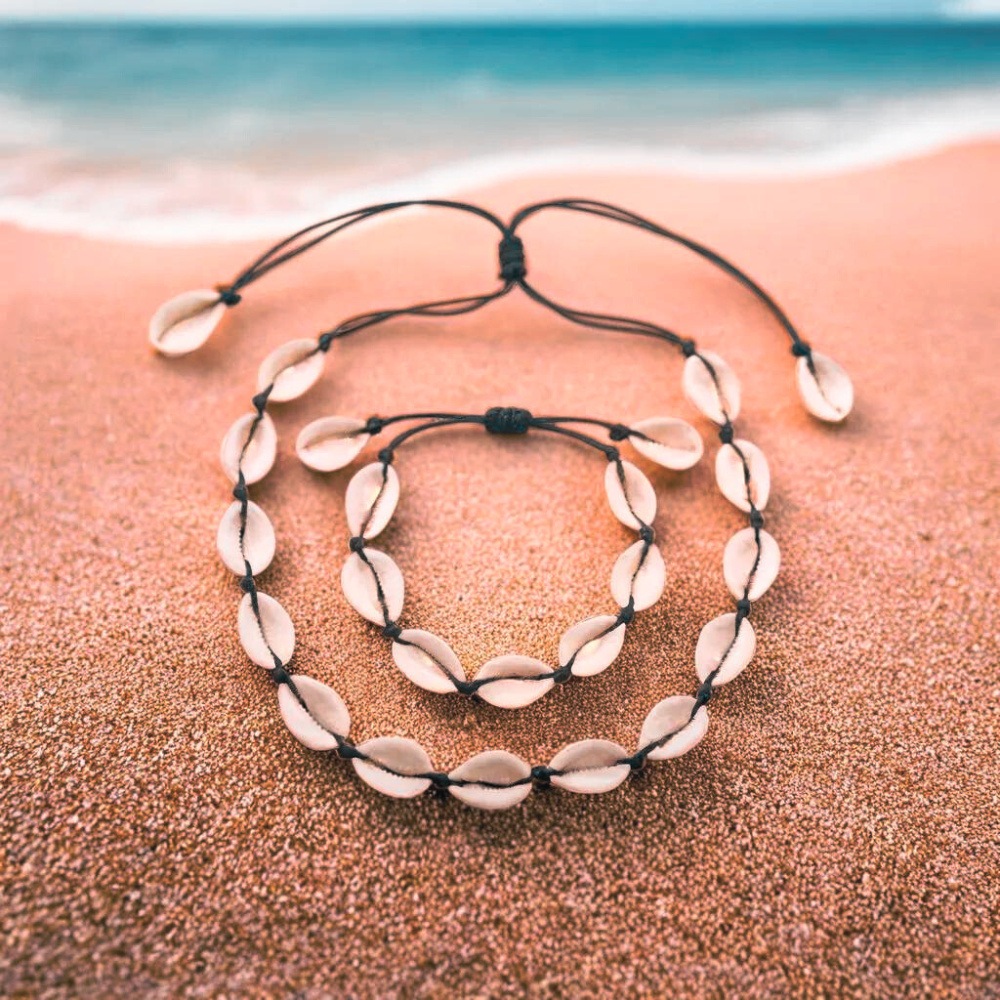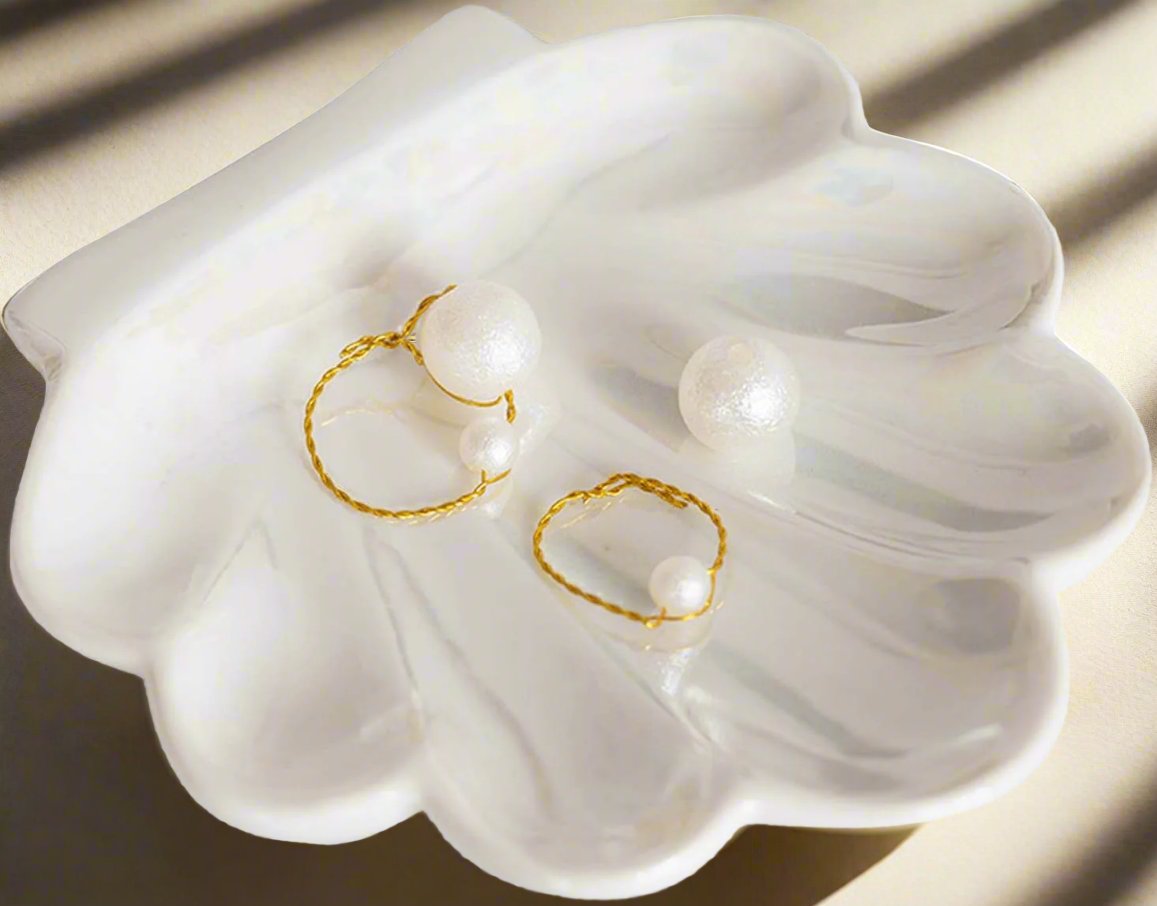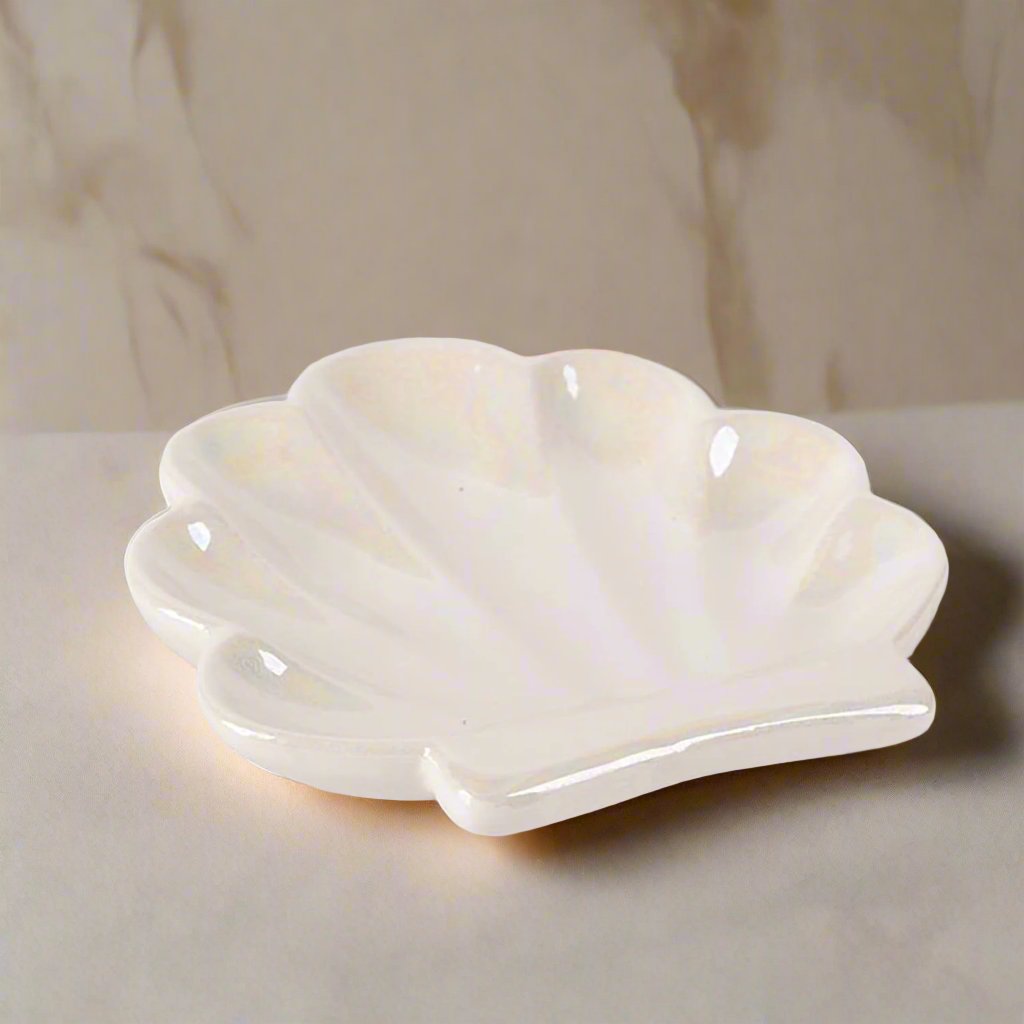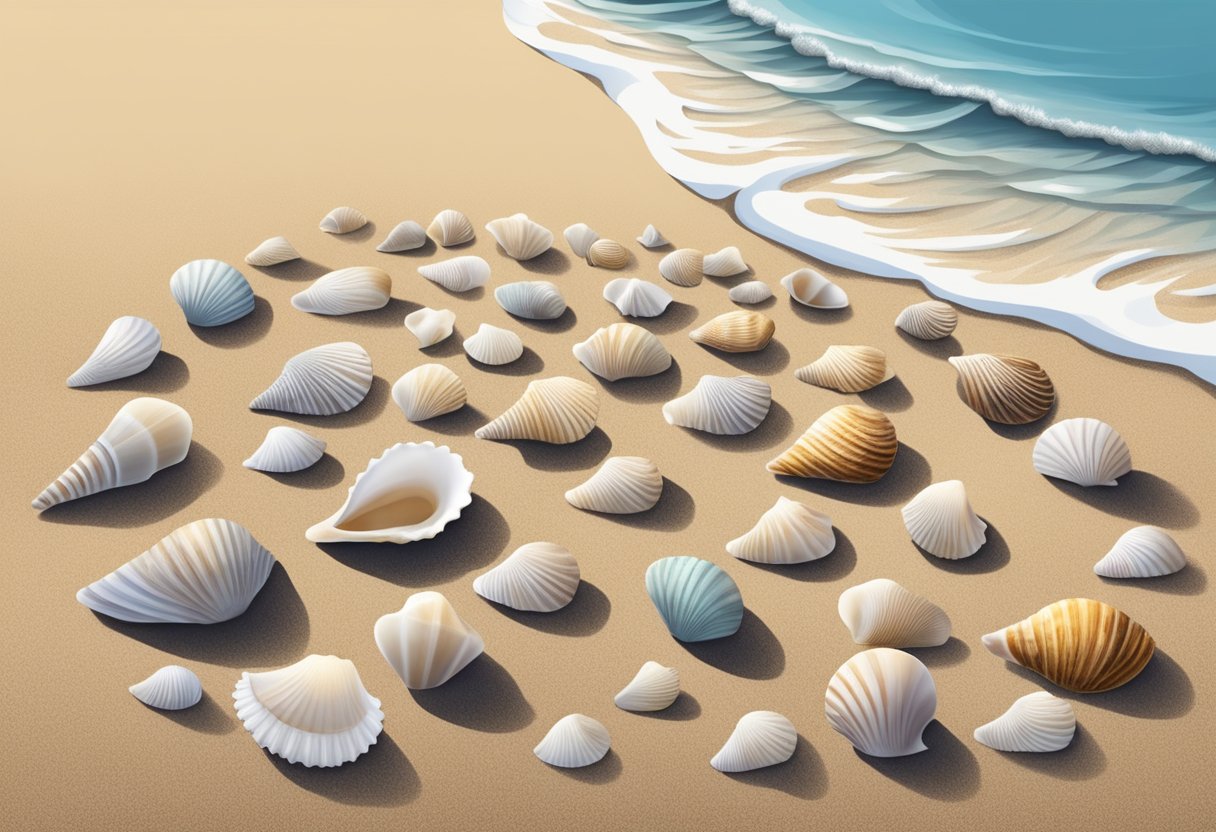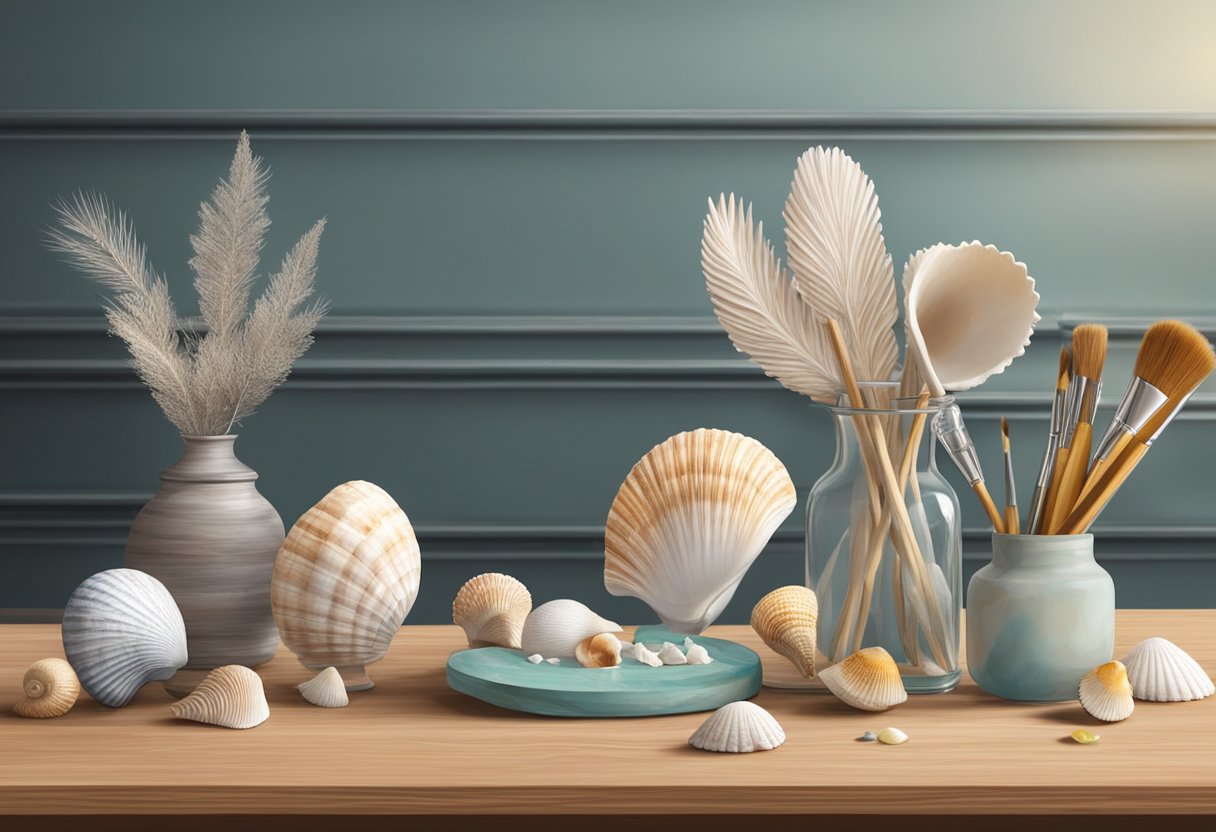Creating beautiful jewelry from seashells is a wonderful way to preserve memories from trips to the beach. By transforming simple shells into necklaces, earrings, and other adornments, one can craft personal and unique accessories. Whether you're a beginner or an experienced crafter, making seashell jewelry is an enjoyable and achievable hobby.
 To get started, you need a few basic supplies like seashells, small jump rings, and cords or chains. Cleaning the shells beforehand ensures they are free from sand and dirt, making it easier to work with them. Adding charms or beads can further enhance the beauty of your seashell pieces, allowing an extra layer of creativity and personalization.
Many tutorials are available to guide each step, from simple drilling to attaching the shells to various jewelry findings. Careful placement and secure fastening are key to ensuring your new pieces are both stylish and durable. Dive into the world of seashell jewelry making and let your creativity flourish with endless design possibilities.
To get started, you need a few basic supplies like seashells, small jump rings, and cords or chains. Cleaning the shells beforehand ensures they are free from sand and dirt, making it easier to work with them. Adding charms or beads can further enhance the beauty of your seashell pieces, allowing an extra layer of creativity and personalization.
Many tutorials are available to guide each step, from simple drilling to attaching the shells to various jewelry findings. Careful placement and secure fastening are key to ensuring your new pieces are both stylish and durable. Dive into the world of seashell jewelry making and let your creativity flourish with endless design possibilities.
 In this section, the focus is on making your seashell jewelry look polished and ensuring it lasts longer by applying the right coatings.
In this section, the focus is on making your seashell jewelry look polished and ensuring it lasts longer by applying the right coatings.
 Seashell jewelry needs special care to keep it looking great. Seashells can be delicate and need protection from damage.
They should be stored in a soft pouch or a lined jewelry box. This keeps them from scratching against other pieces.
Cleaning seashell jewelry is simple. Use a soft cloth to wipe them clean. Avoid using harsh chemicals or abrasive materials. They can damage the shells.
To remove dirt or oils, a gentle soap and water solution works well. Rinse them thoroughly and pat dry with a soft towel.
Avoid exposing seashell jewelry to long periods of sunlight. The sun can cause the colors to fade.
Metal parts on seashell jewelry, like clasps or chains, also need care. Wipe them down with a polishing cloth to keep them shiny.
If the jewelry gets wet, dry it completely before storing it. Moisture can weaken glue and other adhesives used in making the jewelry.
To keep seashell jewelry looking its best, wear it with care. Avoid wearing it when swimming or doing heavy work. This can prevent breakage and damage.
By following these simple steps, seashell jewelry can remain beautiful for a long time.
Seashell jewelry needs special care to keep it looking great. Seashells can be delicate and need protection from damage.
They should be stored in a soft pouch or a lined jewelry box. This keeps them from scratching against other pieces.
Cleaning seashell jewelry is simple. Use a soft cloth to wipe them clean. Avoid using harsh chemicals or abrasive materials. They can damage the shells.
To remove dirt or oils, a gentle soap and water solution works well. Rinse them thoroughly and pat dry with a soft towel.
Avoid exposing seashell jewelry to long periods of sunlight. The sun can cause the colors to fade.
Metal parts on seashell jewelry, like clasps or chains, also need care. Wipe them down with a polishing cloth to keep them shiny.
If the jewelry gets wet, dry it completely before storing it. Moisture can weaken glue and other adhesives used in making the jewelry.
To keep seashell jewelry looking its best, wear it with care. Avoid wearing it when swimming or doing heavy work. This can prevent breakage and damage.
By following these simple steps, seashell jewelry can remain beautiful for a long time.
Selling on websites like Etsy, eBay, or Amazon can help you reach a global audience. Make sure to take clear, high-quality photos of your items. Write detailed descriptions including the materials used and any special features. Local Markets and Fairs
Participating in local craft fairs, farmers’ markets, and community events can help you connect with customers face-to-face. Prepare an appealing display showcasing your best pieces. Offer business cards and informational brochures. Social Media
Platforms like Instagram, Facebook, and Pinterest are excellent for showcasing your work. Regularly post images and engaging content about your jewelry-making process. Use hashtags to increase visibility and attract potential buyers. Respond to comments and messages promptly to foster community. Collaborations
Partnering with local boutiques, gift shops, or online influencers can help increase visibility. Offer them a selection of your pieces on consignment or through a direct sales relationship. Influencers can help you reach a wider audience by wearing and promoting your jewelry. Website and Blog
Creating a personal website can serve as a central hub for your business. Include an online store, blog, and contact information. Writing blog posts about your creative process can engage readers and drive traffic to your site. Pricing Strategy
Set fair prices for your jewelry by considering your material costs, time, and craftsmanship. Research competitors’ pricing. Offer promotions and discounts occasionally to attract new customers and retain existing ones. Customer Service
Provide excellent customer service by responding promptly to inquiries, ensuring swift delivery, and offering hassle-free returns. Trust and satisfaction can lead to repeat business and valuable word-of-mouth referrals. Using these strategies, you can effectively market and sell your seashell jewelry, turning a hobby into a successful business. Making jewelry from seashells can involve several techniques and considerations. The topics covered include incorporating beads, creating necklaces without pre-existing holes, attaching shells without drilling, and preserving and drilling seashells.
Making jewelry from seashells can involve several techniques and considerations. The topics covered include incorporating beads, creating necklaces without pre-existing holes, attaching shells without drilling, and preserving and drilling seashells.
 To get started, you need a few basic supplies like seashells, small jump rings, and cords or chains. Cleaning the shells beforehand ensures they are free from sand and dirt, making it easier to work with them. Adding charms or beads can further enhance the beauty of your seashell pieces, allowing an extra layer of creativity and personalization.
Many tutorials are available to guide each step, from simple drilling to attaching the shells to various jewelry findings. Careful placement and secure fastening are key to ensuring your new pieces are both stylish and durable. Dive into the world of seashell jewelry making and let your creativity flourish with endless design possibilities.
To get started, you need a few basic supplies like seashells, small jump rings, and cords or chains. Cleaning the shells beforehand ensures they are free from sand and dirt, making it easier to work with them. Adding charms or beads can further enhance the beauty of your seashell pieces, allowing an extra layer of creativity and personalization.
Many tutorials are available to guide each step, from simple drilling to attaching the shells to various jewelry findings. Careful placement and secure fastening are key to ensuring your new pieces are both stylish and durable. Dive into the world of seashell jewelry making and let your creativity flourish with endless design possibilities.
Understanding Seashell Types and Qualities
When making jewelry from seashells, it's important to know the different types and qualities of shells. This helps in choosing the right materials for unique and lasting pieces.Identifying Seashell Varieties
There are many kinds of seashells, each with unique features. Conch shells are large and colorful, often used in necklaces. Cowrie shells are small and glossy, great for bracelets. Scallop shells have fan-like ridges and come in various colors. Cockle shells are heart-shaped and ideal for pendants. Olive shells are long and smooth, perfect for beads. Knowing these types helps in selecting the right shell for each jewelry piece.Evaluating Seashell Condition
Examining seashells for flaws is crucial. Look for cracks or chips, as these can weaken the jewelry. Avoid shells with holes unless you plan to use them for hanging pieces. Shells should be clean and smooth. Polishing them can enhance their natural beauty. It's best to use shells with vivid colors and patterns to make your jewelry stand out.Understanding Shell Shapes and Colors
Shell shape affects the style of the jewelry. Round shells make excellent beads, while flat shells are good for pendants. Long, slender shells are suitable for earrings. Colors can vary widely, from pure white to dark brown. Some shells have natural stripes or spots. Using the right shapes and colors can create eye-catching designs.Collecting and Preparing Seashells
Gathering seashells for jewelry requires careful and ethical collection methods. Proper cleaning ensures shells are ready for crafting.Ethical Shell Collecting
When collecting seashells, it's important to respect marine environments. Many species rely on shells for survival. Avoid taking live shells or those that house living creatures. Instead, look for empty shells washed up on the shore. Be mindful of local regulations and protected areas. Some beaches prohibit shell collecting to preserve ecosystems. Always adhere to these rules. Consider collecting during off-peak times to avoid disturbing wildlife. Use a soft bag or a bucket with holes to collect shells. This allows sand and water to drain, keeping the shells clean and dry. Avoid breaking or damaging shells during collection by handling them gently.Cleaning Seashells
Cleaning seashells thoroughly is crucial for jewelry making. Start by rinsing shells in clean water to remove sand and debris. For stubborn residues, soak shells in a mixture of water and mild dish soap. To remove smells and organic material, soak shells in a solution of one part bleach to three parts water for a few hours. Rinse thoroughly afterward. Use a soft brush to gently scrub away any remaining dirt or algae. For a polished look, optionally, use mineral oil or baby oil. Apply a small amount to a cloth and rub the shells lightly. This brings out the natural colors and adds a subtle shine. Ensure all shells are completely dry before starting any jewelry projects to prevent mold and decay. Lay shells on a towel in a well-ventilated area until fully dried.Designing Seashell Jewelry
Designing seashell jewelry involves picking the right style and pairing seashells with suitable materials for a cohesive look. Considerations include aesthetics, jewelry type, and the intended use.Choosing a Jewelry Style
Selecting the right jewelry style is crucial. They can create necklaces, bracelets, earrings, or even anklets. For necklaces, larger shells work well as focal points. These can be strung on simple threads or combined with beads for more intricate designs. Bracelets benefit from smaller, uniform shells. These can be attached to elastic bands or linked together with metal rings for a more sophisticated look. When making earrings, consider using matching smaller shells to create a balanced appearance. Combining shells with materials like silver or gold can add elegance. Anklets often use tiny shells, and stringing them on lightweight chains or threads can keep the design from feeling too bulky.Tools and Materials for Seashell Jewelry Making
Creating seashell jewelry involves various tools and materials that help shape and assemble your pieces. Essential tools include rotary tools, sandpaper, and adhesives, while materials like wires and findings are crucial for connecting and building your jewelry.Basic Jewelry Making Tools
A rotary tool is key for cutting and shaping seashells. This tool helps to grind, cut, and polish the shells to achieve smooth edges and desired shapes. Sandpaper is useful for smoothing and refining the seashell surfaces. Different grits are required, from coarse to fine, depending on the level of smoothness needed. Metal files can smooth smaller areas, adding precision to the jewelry-making process. Ensure to choose files that suit the delicate nature of shells. Wire cutters and pliers are essential for handling and shaping wires. These tools help in creating hooks, loops, and other necessary structures for connecting pieces.Choosing Wires and Findings
Wires are crucial for holding your jewelry together. Copper, sterling silver, and gold-plated wires are popular choices. They should be flexible yet strong enough to support the shells. The wire gauge, typically ranging from 20 to 24, determines the wire's thickness and strength. Findings include earring hooks, clasps, and jump rings. Opt for high-quality metal to prevent allergies and ensure durability. They come in various finishes, such as brass, silver, and gold, allowing for aesthetic flexibility in your jewelry designs.Adhesives and Sealants for Shells
Jewelry adhesives like E6000 or epoxy hold shells firmly in place. These adhesives offer strong bonding and are suitable for both porous and non-porous surfaces. Make sure the adhesive dries clear to maintain the beauty of the shells. Sealants protect seashells from wear and tear. Clear nail polish or specialized sealants can add a protective layer to enhance durability and shine. Sealants also prevent the shells from becoming brittle. By using these tools and materials, you can create stunning seashell jewelry pieces that are both beautiful and functional. Selecting the right components ensures your jewelry will be both durable and attractive.Assembling Seashell Jewelry
Creating beautiful seashell jewelry involves several key steps, including drilling holes, wire wrapping, and attaching findings like hooks or clasps.Drilling Holes in Seashells
Drilling holes in seashells requires precision and care. First, select seashells that are sturdy and not too fragile. Use a small drill bit for best results. It's recommended to use a Dremel tool or a similar rotary tool for this task. Place the shell on a soft surface, like a folded towel, to prevent it from cracking. Mark the spot where you want the hole using a pencil or marker. Hold the shell firmly and drill slowly to avoid breaking it. You can also keep the shell under water while drilling to reduce dust and friction.Wire Wrapping Techniques
Wire wrapping is a versatile technique to turn seashells into pendants or other jewelry pieces. Begin by selecting a thin gauge wire that is easy to manipulate, such as 24-26 gauge. Cut a length of wire, typically around 12 inches, to ensure you have enough to work with. Loop the wire through any holes if you've drilled them, or wrap the wire around the shell securely. Create a loop at the top to attach to chains or ear wires. Twist and trim any excess wire, ensuring that the ends are tucked in neatly to avoid sharp edges.Attaching Findings to Shells
Attaching findings like jump rings, clasps, and ear wires completes the seashell jewelry. For earrings, you can use jump rings to connect the shell to the ear wire. Open the jump ring with pliers, thread it through the drilled hole or wire loop, and close it securely. For necklaces, attach a bail to the shell or use a jump ring to link the shell to a chain. Use strong adhesives like krazy glue to attach bails if drilling isn't an option. Make sure all connections are secure to ensure the jewelry is sturdy for regular wear. By following these steps, you can create unique and stylish seashell jewelry that showcases your craftsmanship and the natural beauty of the shells.Finishing Touches on Seashell Jewelry
 In this section, the focus is on making your seashell jewelry look polished and ensuring it lasts longer by applying the right coatings.
In this section, the focus is on making your seashell jewelry look polished and ensuring it lasts longer by applying the right coatings.
Polishing Seashell Jewelry
When it comes to polishing seashell jewelry, the goal is to enhance the natural beauty of the shells. Begin by cleaning the shells with mild soap and water. Use a soft brush to gently scrub away any dirt or debris. Once clean, let the shells dry completely. For a smoother finish, consider using a fine-grit sandpaper to lightly sand the surface of the shells. This will remove any rough edges and make the shells more comfortable to wear. For a glossy look, buff the shells lightly with a soft cloth. To add extra shine, apply a small amount of mineral oil or baby oil to a cloth and rub it onto the surface of the shells. This will bring out their natural colors and patterns. Always handle the shells gently to avoid breaking or cracking them.Applying Protective Coatings
Applying a protective coating helps protect your seashell jewelry from wear and tear. There are several options available:- Clear Nail Polish: Provides a shiny finish and protects the shell from moisture. Simply brush a thin coat over the surface and let it dry.
- Spray Sealant: Easy to apply and ideal for covering larger areas. Hold the spray can about 12 inches from the shells and apply an even coat.
- Epoxy Resin: Offers strong protection and a thick, glass-like finish. Mix the resin according to the instructions and apply with a brush or pour directly onto the shell.
Jewelry Care and Maintenance
 Seashell jewelry needs special care to keep it looking great. Seashells can be delicate and need protection from damage.
They should be stored in a soft pouch or a lined jewelry box. This keeps them from scratching against other pieces.
Cleaning seashell jewelry is simple. Use a soft cloth to wipe them clean. Avoid using harsh chemicals or abrasive materials. They can damage the shells.
To remove dirt or oils, a gentle soap and water solution works well. Rinse them thoroughly and pat dry with a soft towel.
Avoid exposing seashell jewelry to long periods of sunlight. The sun can cause the colors to fade.
Metal parts on seashell jewelry, like clasps or chains, also need care. Wipe them down with a polishing cloth to keep them shiny.
If the jewelry gets wet, dry it completely before storing it. Moisture can weaken glue and other adhesives used in making the jewelry.
To keep seashell jewelry looking its best, wear it with care. Avoid wearing it when swimming or doing heavy work. This can prevent breakage and damage.
By following these simple steps, seashell jewelry can remain beautiful for a long time.
Seashell jewelry needs special care to keep it looking great. Seashells can be delicate and need protection from damage.
They should be stored in a soft pouch or a lined jewelry box. This keeps them from scratching against other pieces.
Cleaning seashell jewelry is simple. Use a soft cloth to wipe them clean. Avoid using harsh chemicals or abrasive materials. They can damage the shells.
To remove dirt or oils, a gentle soap and water solution works well. Rinse them thoroughly and pat dry with a soft towel.
Avoid exposing seashell jewelry to long periods of sunlight. The sun can cause the colors to fade.
Metal parts on seashell jewelry, like clasps or chains, also need care. Wipe them down with a polishing cloth to keep them shiny.
If the jewelry gets wet, dry it completely before storing it. Moisture can weaken glue and other adhesives used in making the jewelry.
To keep seashell jewelry looking its best, wear it with care. Avoid wearing it when swimming or doing heavy work. This can prevent breakage and damage.
By following these simple steps, seashell jewelry can remain beautiful for a long time.
Marketing and Selling Your Seashell Jewelry
Creating beautiful seashell jewelry is just the first step. Sharing your creations with others can be rewarding and profitable. Here’s how: Online PlatformsSelling on websites like Etsy, eBay, or Amazon can help you reach a global audience. Make sure to take clear, high-quality photos of your items. Write detailed descriptions including the materials used and any special features. Local Markets and Fairs
Participating in local craft fairs, farmers’ markets, and community events can help you connect with customers face-to-face. Prepare an appealing display showcasing your best pieces. Offer business cards and informational brochures. Social Media
Platforms like Instagram, Facebook, and Pinterest are excellent for showcasing your work. Regularly post images and engaging content about your jewelry-making process. Use hashtags to increase visibility and attract potential buyers. Respond to comments and messages promptly to foster community. Collaborations
Partnering with local boutiques, gift shops, or online influencers can help increase visibility. Offer them a selection of your pieces on consignment or through a direct sales relationship. Influencers can help you reach a wider audience by wearing and promoting your jewelry. Website and Blog
Creating a personal website can serve as a central hub for your business. Include an online store, blog, and contact information. Writing blog posts about your creative process can engage readers and drive traffic to your site. Pricing Strategy
Set fair prices for your jewelry by considering your material costs, time, and craftsmanship. Research competitors’ pricing. Offer promotions and discounts occasionally to attract new customers and retain existing ones. Customer Service
Provide excellent customer service by responding promptly to inquiries, ensuring swift delivery, and offering hassle-free returns. Trust and satisfaction can lead to repeat business and valuable word-of-mouth referrals. Using these strategies, you can effectively market and sell your seashell jewelry, turning a hobby into a successful business.
Frequently Asked Questions
 Making jewelry from seashells can involve several techniques and considerations. The topics covered include incorporating beads, creating necklaces without pre-existing holes, attaching shells without drilling, and preserving and drilling seashells.
Making jewelry from seashells can involve several techniques and considerations. The topics covered include incorporating beads, creating necklaces without pre-existing holes, attaching shells without drilling, and preserving and drilling seashells.






















